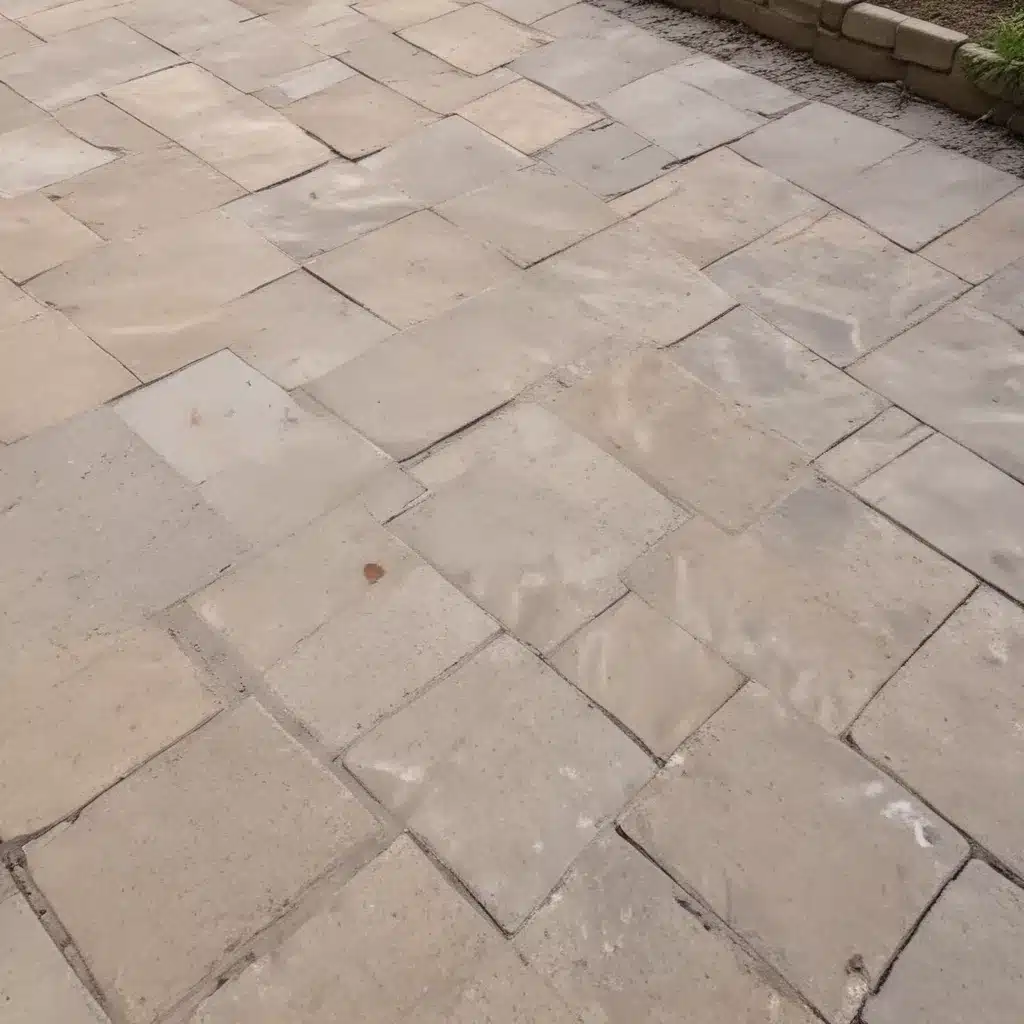
Designing and installing a beautiful, functional patio is no easy feat. There are countless decisions to make, from the overall aesthetic to the specific paving materials, and any missteps along the way can lead to costly problems down the road. As an experienced outdoor living consultant, I’ve seen it all – from pavers sinking and cracking to weeds overtaking the joints. But fear not! With the right planning and attention to detail, you can avoid these common patio paving pitfalls and enjoy your dream outdoor space for years to come.
Patio Paving Trends
Today’s homeowners have an abundance of patio paving options to choose from, each with its own unique benefits and drawbacks. Contemporary design styles often favor the sleek, modern look of porcelain tiles or large-format concrete pavers. These options provide a clean, seamless aesthetic, but require meticulous installation to prevent issues like uneven settling or cracking.
On the other hand, traditional materials like natural stone (e.g. bluestone, flagstone, or travertine) or segmental concrete pavers offer a more rustic, established feel. While these options can be more forgiving of minor installation errors, they do require additional maintenance to prevent problems like discoloration, moss/mildew growth, or weed infiltration.
For homeowners seeking a sustainable, eco-friendly patio, permeable pavers are an excellent choice. These specialized pavers allow rainwater to percolate through the joints, reducing stormwater runoff and recharging groundwater supplies. However, proper base preparation and ongoing joint maintenance are critical to prevent structural issues.
Outdoor Design Ideas
When planning your patio, it’s important to consider how it will integrate with the surrounding landscape. Hardscaping elements like retaining walls, steps, or raised planter beds can add visual interest and define the spatial boundaries of your outdoor living area. Coordinating the paving material, color, and pattern with these hardscaping features creates a cohesive, harmonious design.
Equally important is thoughtful landscaping integration. Strategically placed trees, shrubs, and flower beds not only beautify the space, but also provide valuable ecosystem services like erosion control, stormwater management, and wildlife habitat. However, improper drainage or soil preparation can lead to issues like pavers heaving, settling, or becoming overgrown with weeds.
By carefully considering both the hardscaping and landscaping elements, you can craft an outdoor living space that is visually appealing, functionally efficient, and seamlessly integrated with your home’s existing architecture and surroundings.
Installation Techniques
Proper patio installation is the foundation (no pun intended) for a long-lasting, trouble-free outdoor living space. Site preparation is critical – the ground must be excavated to the appropriate depth, filled with a stable, compacted base material, and graded to ensure proper drainage. Skimping on this crucial step is a surefire way to invite issues like sunken or uneven pavers, weed growth, and even structural damage to your home’s foundation.
Choosing the right paving material for your needs and climate is also essential. While some homeowners may be tempted by the aesthetic appeal of larger pavers or tiles, these can be more prone to cracking and settling under heavy foot traffic or vehicle loads. Smaller, interlocking pavers or medium-sized concrete slabs are generally a more stable and durable option.
Perhaps most importantly, your patio design must incorporate effective drainage solutions. This may involve strategically placed catch basins, trench drains, or even a slight slope to direct water away from the home’s foundation. Failing to address drainage issues can lead to all sorts of problems, from puddling and erosion to potentially catastrophic basement flooding.
Maintenance Guidelines
Even the best-installed patio will require some ongoing maintenance to keep it looking and performing its best. Cleaning and sealing the paving surface on a regular basis (typically every 2-3 years) helps protect against staining, discoloration, and weed growth. For porcelain or concrete pavers, a high-quality sealant can also help prevent cracking and chipping.
Over time, pavers may develop cracks or settle unevenly, creating tripping hazards and an unsightly appearance. Addressing these issues promptly, through pavement repair or strategic re-leveling, can extend the lifespan of your patio. Ignoring them, on the other hand, can lead to further deterioration and more costly fixes down the line.
Weed growth in the patio joints is another common annoyance. Using polymeric sand in the joints, along with a quality weed-blocking geotextile fabric beneath the pavers, can dramatically reduce the prevalence of these unwanted interlopers. Regular maintenance, like power-washing and re-sanding, is also key to keeping weeds at bay.
Cost Comparisons
When budgeting for a new patio, it’s important to consider not just the material costs, but also the labor and installation expenses, as well as the long-term maintenance requirements. Generally speaking, natural stone and porcelain tiles tend to be the most expensive paving options upfront, with costs ranging from $15 to $30 per square foot for the materials alone.
Segmental concrete pavers and permeable pavers fall in the middle, with material costs typically between $8 and $15 per square foot. However, the labor-intensive installation process can add significantly to the overall project budget.
On the more affordable end of the spectrum, concrete slabs or stamped/colored concrete can be installed for as little as $6 to $12 per square foot, including labor. While these options may require less initial investment, they may also have higher long-term maintenance costs, such as periodic re-sealing or resurfacing.
Ultimately, the total cost of your patio project will depend on a variety of factors, from the size and complexity of the design to the specific paving materials and installation techniques used. Consulting with a reputable outdoor living specialist, like those at Cincinnati Patiopaving, can help you weigh the tradeoffs and find the best solution for your budget and needs.

